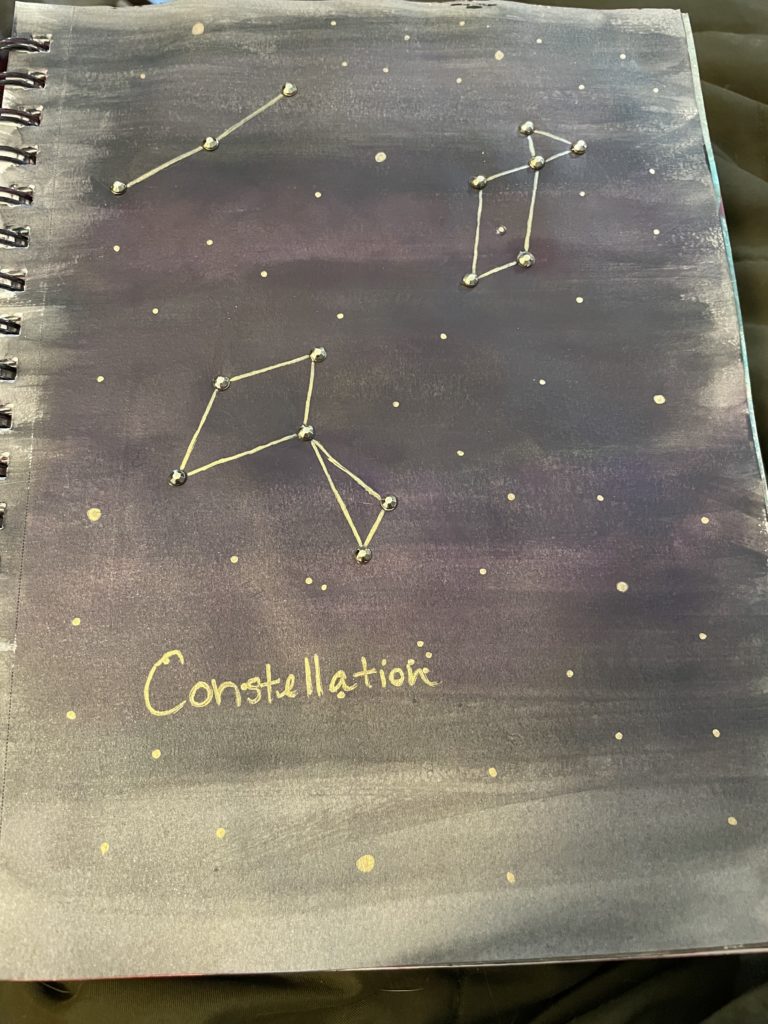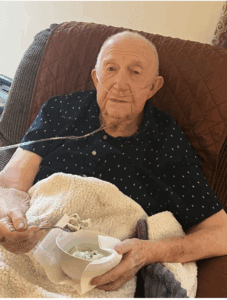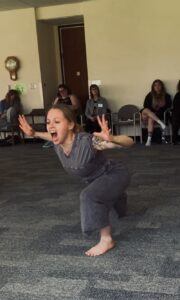I recently had a conversation with a dear friend at an in-person training we were both a part of; she in the role of facilitator, and I was the administrator for the course. It went something like this:
Me: But I’m not a therapist.
Her: No, you don’t see clients. You are a therapist.
I think about that conversation a lot as I perform the tasks of my role each day as the Chief of Operations for the Institute for Creative Mindfulness. I have seen many aspects of how to run this company, at first from the outside, setting up courses in our online system, fielding emails from participants asking about logistics, and making sure online and in-person courses run as smoothly as possible considering our courses are spread throughout the nation and occasionally the world, and much, much more. There are a lot of moving pieces to ICM and I sincerely enjoy my life running the day-to-day operations for this incredible company.
And back to the aforementioned conversation: I also have a master’s degree in Clinical Mental Health Counseling, which means I am technically eligible to take any of the courses we offer. When I came on board in January 2021, Dr. Jamie and I discussed at length what my role would be like, including taking part in some of our trainings, usually in an administrative role, after all, when something goes awry, I am the one people usually need to talk to. I started my time with ICM after the world had been plunged into a pandemic for nearly a year and people had been navigating the ins and outs of learning and training in this new world. That being said, we were also starting to gently explore what it would be like to have a few in-person training opportunities again.
This presented yet another logistical learning opportunity for yours truly, and I was able to see what in-person training looks like from the inside when we trained about 50 people in EMDR therapy in Pray, Montana in early fall. It was truly a wonderful experience and one I look forward to again when we return to that area in 2022.
So, let’s take stock: I know the insides and administration of what we do, and I got to see the back end live and in-person as well, so what’s left? Being a part of our training process as a participant was the next logical step. Participating in our EMDR therapy training as a student while meeting the expectation that “each participant take on the role of both client and therapist during practicum, and will be required to do a piece of their own authentic, clinical work,” hit me in an unexpected place, the pit of my stomach that I now call my Dread Center. That sentence is a part of our pre-training materials, and it played through my head many times leading up to the actual training event itself. Naturally I was terrified as I am not great with feelings. I should say, rather, I’m not great with my own feelings; I’m really good with other people’s feelings and I was a practicing therapist for a time.
As a firm believer that we are “never done,” as in learning, teaching, growing, helping, being, etc. I was excited to take on this next venture, in spite of my Dread Center telling me that vulnerability is not only terrifying but also excruciating. And to have to do the whole thing from my (slightly chaotic) home! It appeared that I was to create more layers of challenge than was necessary, and it is at this point I feel the need to explain to you that the chaos is not negative; the chaos is the day-to-day life of someone working from home amid spouses and pets (we have a [now] set number of cats). My spouse is an incredible human who lives with a brain injury he acquired in 2019, and so when I travel for work, until very recently, we would ask a family member to fly in to help him as we do not have any family in the area. The idea of managing my home life with a 6-day EMDR therapy training intensive was a lot. A lot of emotional work. A lot of emotional work for me in particular because I’m not great at my feelings.
Dr. Jamie teaches a limited number of trainings a year, so when the opportunity came about to participate in her last online training of the year, I signed myself up immediately, despite knowing I’d be facing some challenges. So, I decided to get in front of the situation and take myself out of the home/life equation. Here’s how I simplified my online training experience:
At the start of 2020, I had a flight get cancelled due to COVID, so I had a plane ticket I had to use by the end of the year, and since it was a solo ticket, I knew this was the time to use it. A dear friend of mine had mentioned that she was performing in the Cleveland Dance Festival, which happened to take place two days before the start of the training. Flying into Cleveland seemed as good an idea as any since I don’t really know anyone who lives there, so that settled it: I would fly into Cleveland a few days ahead, see the show, and then stay on for a little over a week to complete my training before flying home and getting back to real life. I was able to book a charming 1-bedroom apartment for a ten-day stay in the North Coast.
That took care of where I was going and where I was to stay, so next I had to figure out how to make the space conducive to my needs for the week. If you’ve ever done any online learning before, you probably know that the first time is always a bit of a learning curve, but that can be said of a lot of first-time things (I didn’t learn how to ride a bike until age 7). You don’t really know what to expect, so you try to prepare as best you can. Knowing the training from the inside afforded me some insight, so I was able to plan ahead. Here’s what I did to create an online oasis in my temporary home:
- Comfort in your space. EMDR therapy training involves a lot of listening and requires a pretty sedentary schedule at times. To prepare for this, I wanted to have lots of comfortable items around me, not only for grounding during the training, but also because I wanted physical comfort with blankets and the pillow fort I surrounded myself with so I would have surfaces on which to take notes. It turned out to be very useful emotionally as well because our bodies can rapidly change temperature during the process, and I had several blankets. My couch fort was well stocked.
- Quiet. I tell my partner that some of my favorite things in life are silence and working. And our cats. We have 5 cats. Adorable, loving, snuggly, attention-loving cats. They are definitely not the stereotypical cat who is said to be cold and aloof. They want attention all the time. I’m really good at ignoring them at home when I’m “regular” working, but if I were in a learning environment that has a group component as well as one-on-one practicum, they would be quite a distraction, despite their cuteness. Having almost guaranteed solitude was a must for me. I wanted to be able to focus solely on what I was learning while staying in the moment with my practicum partners.
- Food/snacks. EMDR therapy training makes you extremely hungry. It’s all that processing that comes up in the learning process. It will make you eat everything in sight. And then have pizza and an inappropriate number of mall pretzels. Knowing that I’d be in training during the day I wanted to have foods for breakfast and lunch that were easy to prepare, on hand, as well as be delicious, as I am not someone who wants to eat out every meal of the day. Eating out several meals a day just wasn’t practical. So I ordered groceries to be delivered to the apartment. Nothing excessive, but I was going to be there for nearly 10 days of breakfasts and lunches, plus whatever dinners I cooked at “home,” so I made a list and had everything delivered (I wasn’t renting a car, so going to the store myself wasn’t really a good option for me).
- Art supplies. When I assist with or participate in a training, my creativity really gets moving and I want to create anything and everything, so I made sure to pack a lot of art supplies: coloring books, gel pens, my art journal, oil pastels, watercolors, brushes, everything! I was very glad I brought those things along because EMDR therapy training made me want to connect with my artistic side. So, I colored. And I created. A lot. Side note: I was gifted a collection of tiny stickers and I used them to take notes in my training manuals. It not only helped me focus on the material, but I was also able to use the stickers as visual cues to what we were learning. I used my oil pastels to highlight pieces I wanted to remember. Bringing these materials worked in more than one capacity for me.
- Work. I did not take off any official time from my regular duties at ICM for this training. I know not everyone can do this, but I spent some of my lunch hour answering emails, and spent about an hour after training ended for the day working. I couldn’t do this every day as some days were emotionally exhausting, but I was extremely glad I didn’t set a true away message. My away message read something like this, “Thank you for contacting me. I will have limited availability during the week of November 7th as I will be participating as a trainee in our EMDR therapy training. Although I would love to connect with you, please be aware that I may not be able to answer your email with the usual speed (two business days). Warmest possible regards, Beck.” Telling people with a lot of notice that you’ll have limited access to email was one of the best things I could have done. Setting those expectations was paramount.
It is not lost on me that being able to create this training oasis for myself comes from having some privilege. This trip was not free, and I chose to participate in this training in this manner, but I also chose myself while preparing for this work. I knew that to get what I needed out of the experience, I needed to be by myself so I could really focus on myself and make my participation everything it was meant to be.
EMDR therapy training involves so much more than sitting, listening, and then practicing skills in a partnered practicum. It requires a lot of the learner, more so than I realized as the person on the other end of this process. One tries to see things from other perspectives, but during this exercise, I saw it in a completely different way, and it was an incredibly valuable experience. It did reaffirm my decision to no longer see clients though. This type of work is best left to those who want to build a truly deep and therapeutic relationship, and I want to build my career on a different path.














